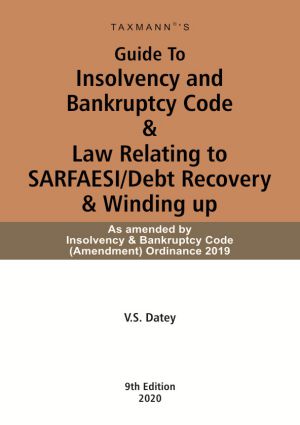Difference between Dissolution and Winding Up of a Company
- Blog|Insolvency and Bankruptcy Code|
- 2 Min Read
- By Taxmann
- |
- Last Updated on 25 June, 2021
Difference Between Winding Up and Dissolution
Dissolution and Winding Up are two different but related words.
Winding Up is a process led by a liquidator under Tribunal of laws where he settles and distributes the assets of the companies amongst its creditors and shareholders’ before the company is dissolved. After the winding up process is complete then NCLT may pass the order of dissolution of the company that is the company seizes to be in state of existence and its name shall be struck off from the register of Registrar of Companies and shall be published in the Official Gazette.
Wind Up Meaning
Winding Up is defined as liquidation of company in Insolvency and bankruptcy Code, 2016 and could be a compulsory winding up as enforced by the creditors of the company or voluntary winding up of private limited company procedure as brought in by the corporate person. It’s a two-step process, first Insolvency Resolution Process takes place and then liquidation of the company occurs. While Winding of the company is taking place the Corporate entity still exists however after dissolution, the existence of the corporate entity is put to an end.
A Winding Up petition can be submitted by the company itself, or by its contributors, or by a Registrar or by Central or State Government. A company may still be running its business during procedure for winding up of a company in India if it instills that it will be beneficial for winding up process however after dissolution the company seizes to exists anymore to run its business.
Dissolution of Company
The Dissolution of a company may take place in two ways.
-
- First in which the company is transferred to another company under the scheme of reconstruction or amalgamation. In such a case, the transfer of company will be dissolved by an order of Tribunal without it being wound up.
- In second scenario, the company shall undergo winding up process where the assets of the company shall be realized and proceeds shall be used to pay its liabilities. Once the debts have been settles, the remaining amount, if any, shall be distributed amongst the stakeholders and Tribunal shall pass the order of dissolution of the company and strike its name off the register of Registrar of the Companies.
The winding up of a company is judged by the Tribunal and the procedure for winding up of a company in India which is purely a judicial function. There is a liquidator who carries off and administers the winding up process. After winding up, the dissolution process takes place. The dissolution of a company is recorder by registrar of companies. This is a purely administrative function and do not involve any role for the liquidator. Dissolution is a necessary step following the winding up of a company. Since April 2016, the provisions relating to the compulsory winding up under the Companies Act 2013 have been replaced with Insolvency and bankruptcy Code, 2016. Since then there have been various amendments in the law with recent one being IBBI (Insolvency Professionals) (Amendment) Regulations, 2018.
Disclaimer: The content/information published on the website is only for general information of the user and shall not be construed as legal advice. While the Taxmann has exercised reasonable efforts to ensure the veracity of information/content published, Taxmann shall be under no liability in any manner whatsoever for incorrect information, if any.

Taxmann Publications has a dedicated in-house Research & Editorial Team. This team consists of a team of Chartered Accountants, Company Secretaries, and Lawyers. This team works under the guidance and supervision of editor-in-chief Mr Rakesh Bhargava.
The Research and Editorial Team is responsible for developing reliable and accurate content for the readers. The team follows the six-sigma approach to achieve the benchmark of zero error in its publications and research platforms. The team ensures that the following publication guidelines are thoroughly followed while developing the content:
- The statutory material is obtained only from the authorized and reliable sources
- All the latest developments in the judicial and legislative fields are covered
- Prepare the analytical write-ups on current, controversial, and important issues to help the readers to understand the concept and its implications
- Every content published by Taxmann is complete, accurate and lucid
- All evidence-based statements are supported with proper reference to Section, Circular No., Notification No. or citations
- The golden rules of grammar, style and consistency are thoroughly followed
- Font and size that’s easy to read and remain consistent across all imprint and digital publications are applied




 CA | CS | CMA
CA | CS | CMA
